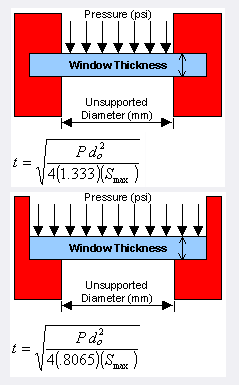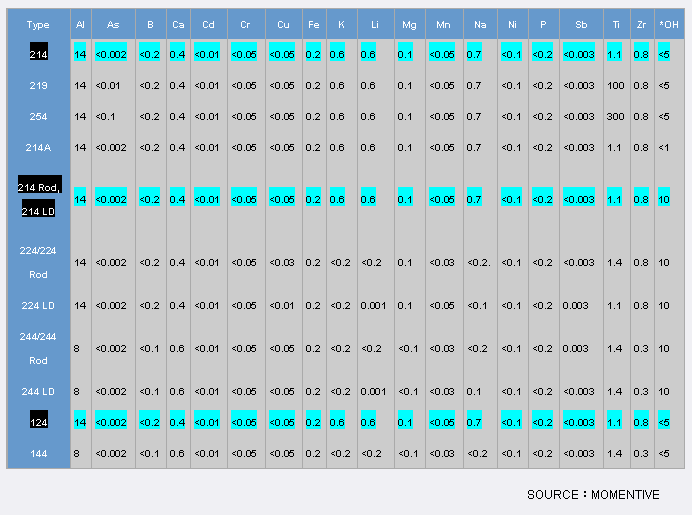
| Since fused quartz is utilized in applications involving internal pressures, it is sometimes helpful to know the maximum pressure which can be applied to a certain size tube. The following formula will approximate this information at room temperature. | |||||
| CFQ Rupture Formula For Tubing | CFQ Rupture Formula For Discs And Plates | ||||
| S = p*r/t Where: S = Hoop Stress in Pa p = Working pressure (Pa) r = Inside Radius of Tube (mm) t = Wall Thickness (mm) This formula is not applicable when the internal pressure exceeds 7x105 Pa (100 psi). |
Calculating pressure differential is also required for many applications of stressed fused quartz discs, plates, and sight glasses. The formula which follows can be used for room temperature applications of circular parts with either clamped or unclamped edges. |
||||
|
|||||
|
|||||









